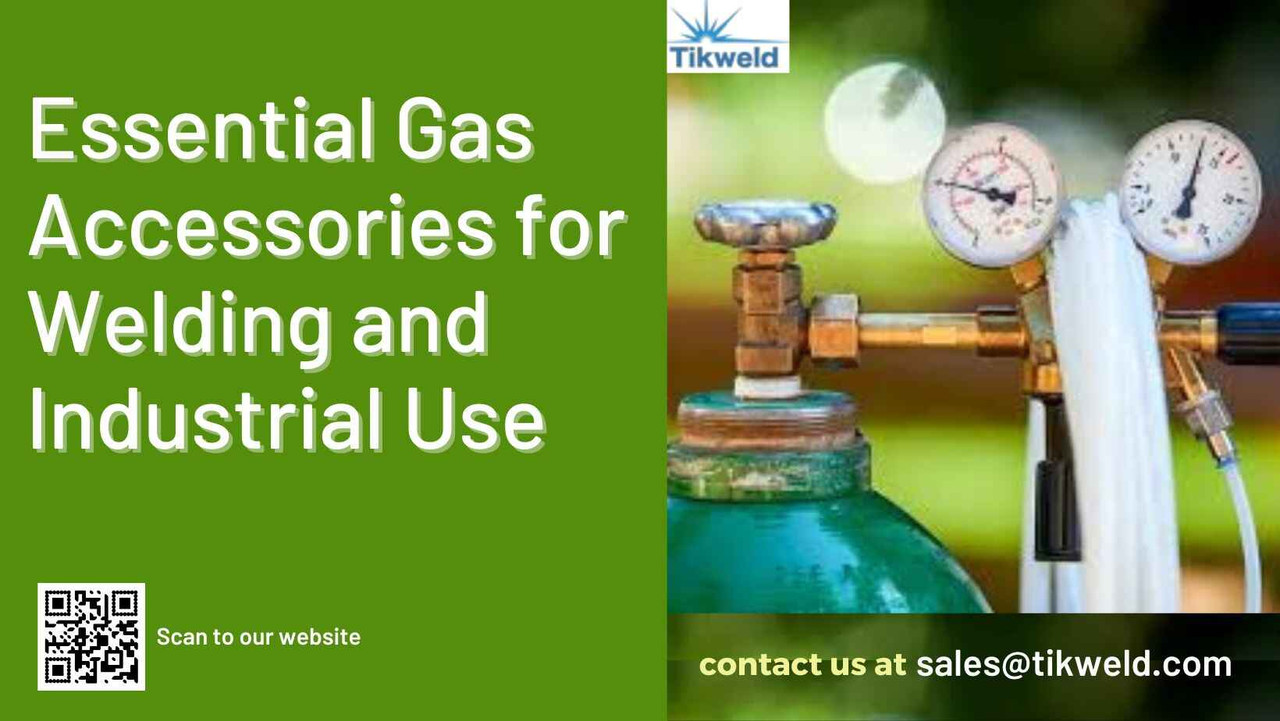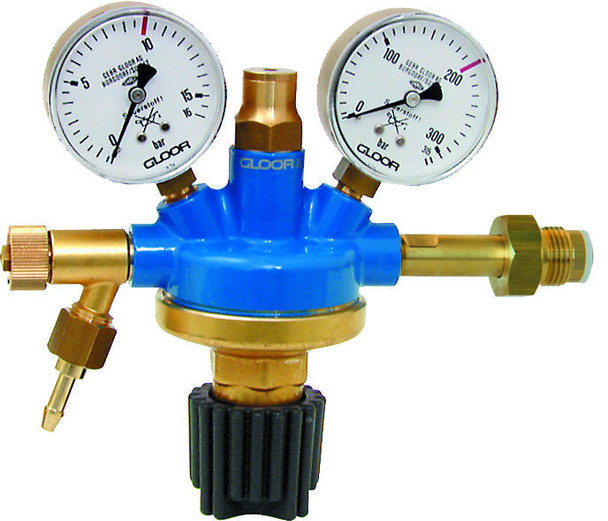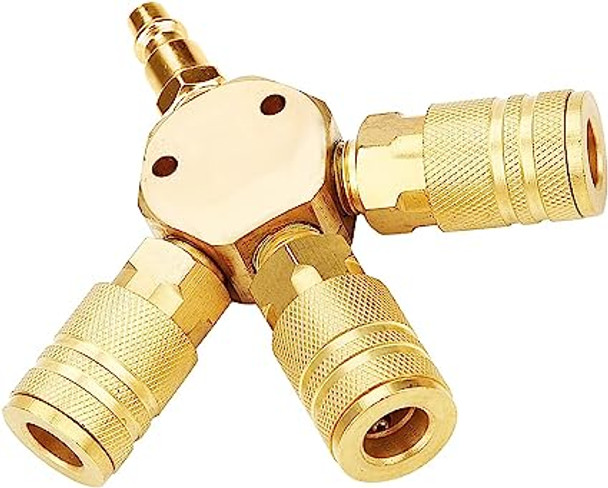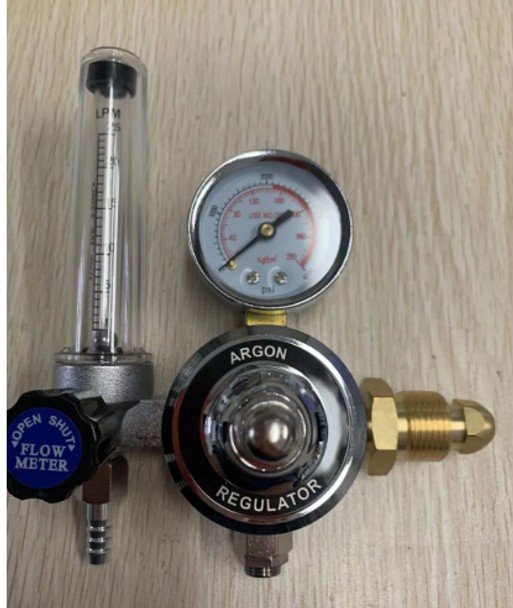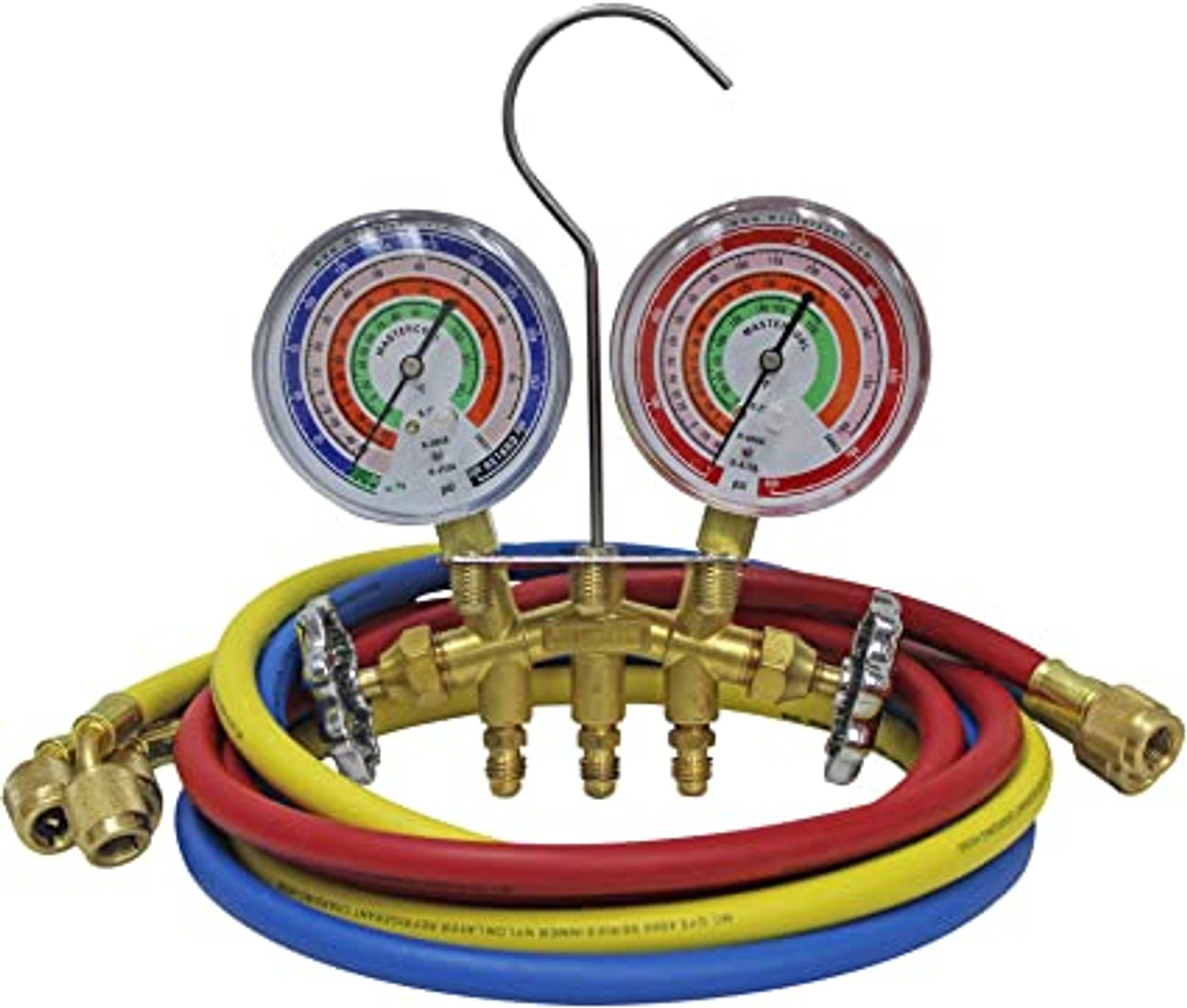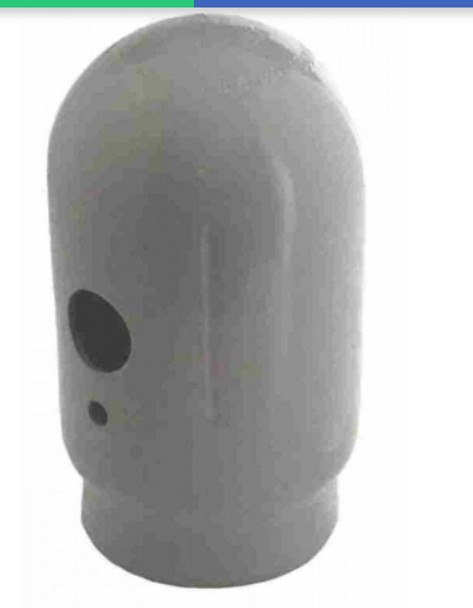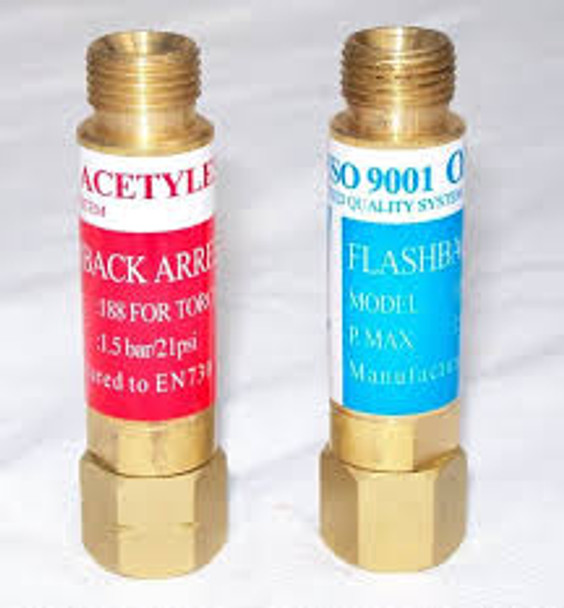Essential Gas Accessories for Welding and Industrial Use
Key Takeaway
- Gas Regulators for Precise Control: Regulators are essential for controlling gas flow and pressure, ensuring safe and efficient welding. Choose one compatible with the gas type and required pressure range.
- Flashback Arrestors for Safety: Flashback arrestors prevent flames from traveling back into hoses and cylinders, protecting both equipment and operators from potential accidents.
- Gas Hoses for Durability and Flexibility: High-quality, durable hoses are essential for safely delivering gas to the torch. Opt for hoses rated for the specific gases used in your welding setup.
- Welding Torches and Nozzles: Select torches and nozzles designed for the specific gas type and welding technique, ensuring efficient gas delivery and consistent performance.
Introduction
Welding and other industrial processes that require gas play a crucial role in various industries, from construction to manufacturing. The right gas and gas accessories ensure that welding, cutting, and other tasks are done efficiently, safely, and effectively. However, many individuals and companies overlook the importance of selecting the right gas accessories play a critical role in ensuring safety, precision, and efficiency in welding and industrial gas applications.
Key accessories include gas regulators, which provide precise control over gas flow and pressure, allowing for consistent and safe operation. Flashback arrestors are vital for safety, as they prevent dangerous flames from traveling back into hoses or cylinders, reducing the risk of accidents. High-quality gas hoses are also essential, delivering gases safely and maintaining durability under various pressures. Welding torches and nozzles, specifically designed for each gas type, support consistent gas delivery, enhancing weld quality.
Cylinder carts and stands make transporting heavy cylinders easier and safer, minimizing the risk of injuries during handling. Additionally, flow meters help monitor gas consumption accurately, which is important for maintaining consistent welding performance. Quick-connect couplings add convenience, enabling fast and secure connections. Finally, appropriate personal protective equipment (PPE) such as flame-resistant gloves, goggles, and respirators ensures that welders are protected from sparks, heat, and fumes, making these accessories indispensable for a safe and effective welding setup.
This guide aims to provide a comprehensive overview of the essential gas accessories needed for welding and industrial use. From regulators and hoses to flow meters and safety valves, we'll break down the various components you’ll need to ensure your projects run smoothly.
Gloor Oxygen Gas Regulator
Types of Gases Used in Welding and Industry
Before we dive into the accessories, it's essential to understand the gases commonly used in welding and industrial applications. The type of gas you use dictates the kind of equipment and accessories required.
1. Acetylene:
A highly flammable gas that is widely used in oxy-acetylene welding and cutting. It's perfect for applications that require intense heat, such as brazing and cutting steel.
2. Argon:
Argon is an inert gas commonly used in TIG (Tungsten Inert Gas) and MIG (Metal Inert Gas) welding. It provides excellent shielding for metals during welding, preventing contamination and oxidation.
3. Oxygen:
Primarily used in oxy-fuel cutting and welding. It's combined with acetylene or propane to create a high-temperature flame for cutting through metals.
4. Nitrogen and Helium:
While nitrogen is often used as an inert gas to avoid oxidation, helium is used in specialized applications like welding non-ferrous metals and in cryogenic processes.
Each of these gases requires specific accessories to ensure they are delivered efficiently and safely, which brings us to the next section.
Key Categories of Gas Accessories
Gas accessories are the backbone of your gas delivery system. They are designed to ensure that the gas is supplied safely, efficiently, and at the right pressure for various applications. These accessories typically fall into the following categories:
1. Regulators
2. Hoses and Gas Lines
3. Valves and Flow Meters
4. Fittings and Connectors
5. Safety Accessories
Each of these plays a crucial role in managing the flow, pressure, and delivery of gases, contributing to safety and performance.
3 Way Air Hose Compressor Splitter, 1/4''
Regulators and Pressure Control Systems
What Are Regulators?
Regulators are essential components that control the pressure of the gas being delivered to your equipment. They reduce the high pressure from a gas cylinder to a usable, lower pressure suited for welding or other industrial processes.
Types of Regulators
1. Single-Stage Regulators:
These are simple and affordable, reducing the pressure in one step. They are suitable for low-pressure applications and are commonly used in portable setups.
2. Multi-Stage Regulators:
These regulators have multiple stages to provide more stable pressure control. They are often used in situations where consistent and precise pressure is critical, such as in industrial applications or high-performance welding.
3. Specific Regulators for Different Gases:
Not all gases behave the same way, so different types of regulators are required depending on the gas being used. For example, acetylene regulators have special features to handle the gas's instability, while argon regulators ensure safe and precise flow for welding.
Factors to Consider When Choosing a Regulator
1. Pressure Range:
Make sure the regulator matches the pressure specifications of the gas and application.
2. Flow Rate:
Choose a regulator with a flow rate suitable for your project. Some projects may need a higher gas flow than others.
3. Material Compatibility:
Different gases can react with certain materials, so ensure the regulator is made from materials that are compatible with the gas you're using (e.g., brass, stainless steel).
Argon Gas Regulator With Flowmeter
Welding Hoses and Gas Lines
The hose is the lifeline between the gas cylinder and your welding torch or equipment. Choosing the right hose and gas line is critical to ensure the safe and efficient delivery of gas.
Choosing the Right Hose
1. Material Types:
Welding hoses come in various materials such as rubber, PVC, or thermoplastic. Rubber hoses are the most commonly used, providing flexibility and durability. Thermoplastic hoses, on the other hand, are ideal for environments with exposure to chemicals or extreme temperatures.
2. Hose Sizes and Lengths:
Hoses come in different sizes and lengths, with typical diameters ranging from 1/4 inch to 1/2 inch. The length depends on the distance between your gas supply and equipment.
3. Pressure Rating:
Each hose has a pressure rating that ensures it can safely handle the gas pressure used in the system. Always verify that the hose’s pressure rating aligns with the regulator and cylinder.
Hose Safety Features
1. Reinforced Hoses:
Some hoses are reinforced with materials like braided steel to prevent burst failure. This is particularly important when using gases under high pressure, such as acetylene.
2. Flame-Retardant Hoses:
Certain applications, especially in welding, require hoses that are resistant to flame or heat. These hoses help prevent fire hazards while maintaining the integrity of the gas flow.
3. Dual-Line Hoses:
For projects that require multiple gases, dual-line hoses allow two types of gases to be supplied simultaneously. This is commonly seen in oxy-fuel cutting and welding, where both oxygen and acetylene are required.
Gas Valves and Flow Meters
Gas valves and flow meters help control the flow and pressure of gas, ensuring that it is delivered safely and accurately to your equipment.
Gas Valves
1. Manual vs. Automatic Shutoff Valves:
Manual valves require the operator to turn them on and off, while automatic shutoff valves activate when the pressure exceeds a certain level, preventing gas leaks.
2. Valve Material Considerations:
Valves are made from various materials, including brass and stainless steel. Stainless steel is often chosen for its durability, while brass is more common in lower-pressure settings.
Flow Meters
1. Role of Flow Meters:
Flow meters are used to monitor and regulate the amount of gas flowing to your equipment. It helps prevent overuse of gas, which can be wasteful and costly.
2. Digital vs. Analog Flow Meters:
Digital flow meters provide more precise readings and are easier to read, while analog meters offer a more basic option.
3. Calibration and Maintenance:
Regular calibration of flow meters ensures that the readings are accurate, and routine maintenance keeps them functioning correctly.
2-Way Brass Manifold,3-1/8 Inch Gauges Set.
Fittings and Connectors
Fittings and connectors play a crucial role in linking the various parts of your gas delivery system. They ensure that the gas flows smoothly between components, such as regulators, hoses, and equipment.
Types of Fittings
1. Threaded Fittings:
These are the most common type of fitting used to connect gas lines to regulators, valves, and equipment. They require proper sealing to avoid leaks, which is why using the correct thread type and applying sealant is vital.
2. Push-On Fittings:
These fittings allow for quick connections and disconnections without the need for tools, making them ideal for temporary setups or quick changes. However, they must be used in lower-pressure applications to avoid blowouts.
3. Quick-Connect Fittings:
Quick-connect fittings provide a fast and secure way to connect and disconnect gas hoses. These are particularly useful in industrial environments where frequent changes in equipment or hose lines are necessary.
Gas Cylinder Valve Adapters
Gas cylinders come with different valve types, and in some cases, adapters are needed to connect them to your gas supply system. Choosing the right adapter ensures compatibility between the cylinder and your accessories. It is important to match the type of valve used by the gas cylinder with the corresponding fitting or regulator.
Importance of Leak-Proof Fittings
Gas leaks are a significant safety hazard, especially when dealing with flammable gases like acetylene. Ensuring that all fittings and connectors are properly installed, sealed, and leak-proof is essential for protecting workers and maintaining a safe working environment. Regular inspections for wear and tear, as well as routine maintenance, can help prevent leaks and other safety concerns.
Gas Cylinder and Tank Accessories
Gas cylinders are central to the gas delivery system, and there are several accessories that help manage and protect these cylinders.
1. Cylinder Caps and Guards
When gas cylinders are not in use, they should always be securely capped and guarded. Cylinder caps protect the valve from dirt and damage, while cylinder guards protect the cylinder from impacts and prevent it from rolling around. These safety features are crucial for avoiding accidents in high-risk environments.
2. Cylinder Trolleys and Stands
Transporting gas cylinders can be dangerous if not done properly. Cylinder trolleys and stands are essential accessories that provide safe and efficient means of moving cylinders without the risk of tipping or damage. When selecting a trolley, make sure it is designed to handle the size and weight of the cylinder you are using.
3. Cylinder Storage
Proper storage of gas cylinders is essential to maintaining safety and compliance with safety regulations. Cylinders should always be stored upright in well-ventilated areas, away from heat sources, and should never be exposed to direct sunlight. Proper storage helps prevent leaks, damage to the cylinder, and reduces the risk of fire.
Compressed Gas cylinder caps (for Safety and storage)
Safety Accessories for Gas Handling
Handling gases comes with inherent risks, especially when working with flammable gases. Ensuring safety at all stages of the process is essential to protect workers and prevent accidents. Several safety accessories help mitigate these risks.
1. Flashback Arrestors
Flashback arrestors are devices that prevent a flame from traveling back into the gas supply, which could cause an explosion or fire. These are crucial safety devices in oxy-acetylene welding systems, where the risk of flashbacks is higher.
2. Check Valves
Check valves ensure that gas does not flow backward into the system, which could potentially cause a dangerous reaction. They are typically used in combination with flashback arrestors to ensure that gas only flows in one direction, reducing the risk of a hazardous buildup of pressure.
3. Pressure Relief Valves
Pressure relief valves are essential for preventing over-pressurization of the gas system. These valves automatically release gas if the pressure reaches a dangerous level, helping to maintain safe operating conditions and prevent equipment damage or accidents.
4. Regulator Gauges
Regulator gauges are vital for monitoring the pressure in the gas system. They provide visual readings of the pressure, allowing operators to make adjustments as needed to maintain the proper flow and ensure that the equipment operates safely and effectively.
Maintenance and Care of Gas Accessories
Regular maintenance is crucial to ensuring the long-term performance of your gas accessories. Poor maintenance can lead to leaks, inefficient gas flow, or even accidents. Here are some essential maintenance tips:
1. Inspect Regularly:
Always check regulators, hoses, and fittings for wear and tear. Look for signs of cracks, leaks, or fraying hoses, and replace components as needed.
2. Clean Accessories:
Dust and dirt can build up in hoses, regulators, and valves, impeding gas flow. Clean these accessories regularly using the appropriate methods and products to maintain optimal performance.
3. Store Properly:
Store gas cylinders and accessories in a cool, dry place, away from extreme temperatures or direct sunlight. Ensure that hoses and regulators are not kinked or damaged when not in use.
4. Replace Worn Components:
Pay attention to the condition of seals, gauges, and hoses. If you notice any degradation, replace them immediately to prevent potential hazards.
Choosing the Right Gas Accessories for Your Project
Selecting the right accessories depends on the specific requirements of your project. Consider the type of welding or industrial process you are working with and choose accessories that are compatible with your chosen gases and equipment.
1. Factors to Consider: Consider factors like the gas type, pressure requirements, and the size of your project. For example, a high-volume industrial operation may require multi-stage regulators and reinforced hoses for durability.
2. Budget Considerations: While it’s tempting to opt for cheaper options, always prioritize quality when it comes to gas accessories. Poor-quality components can lead to inefficiency and safety risks, which can end up costing more in the long run.
Oxygen/Acetylene flashback arrestor
Frequently Asked Questions
1. What type of regulator should I use for acetylene?
Acetylene requires a specific type of regulator designed to handle its unique properties, including a safety valve to prevent backflow. Choose a regulator specifically rated for acetylene use.
2. How often should I inspect my gas hoses?
Hoses should be inspected regularly for signs of wear, including cracks or fraying. Ideally, inspect them before each use, and replace them if any damage is found.
3. Can I use a standard regulator for different gases?
It’s not recommended to use the same regulator for different gases. Each gas has different pressure and flow requirements, so using a dedicated regulator for each gas ensures optimal performance and safety.
4. Why do I need a flashback arrestor?
Flashback arrestors prevent a dangerous flame from traveling back into the gas cylinder, which could cause an explosion. They are critical in systems using acetylene and oxygen.
5. What is the correct way to store gas cylinders?
Gas cylinders should always be stored upright in a well-ventilated area, away from heat sources, and never in direct sunlight. Keep them away from flammable materials and ensure they are properly secured.
Related Articles
12 essential welding equipment for fabrication work
Choosing the Right Industrial Welding Service Provider
Essential Welding Tools and Equipment for Every Workshop
5 Must Have Welding Accessories for Efficiency and Safety
Conclusion
Choosing the right gas accessories is essential for ensuring both safety and efficiency in welding and industrial operations. By investing in high-quality regulators, hoses, valves, fittings, and safety accessories, you can reduce risks, improve productivity, and maintain a smooth operation.
When selecting your accessories, always consider the type of gas you are using, the specific needs of your project, and the overall safety measures necessary to create a secure work environment.
For all your welding and gas accessory needs, visit Tikweld Welding Supplies for top-quality products and expert advice. Get the right tools to ensure your welding and industrial operations are safe and efficient today!

